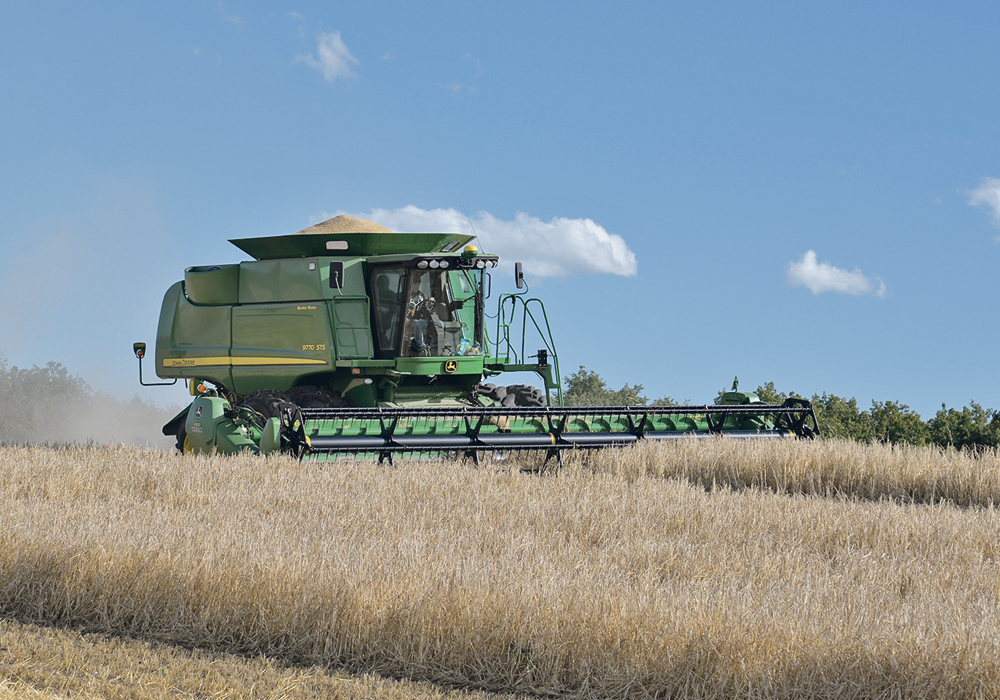Farmers are advised to make a more thorough assessment of residual nutrient levels because of uneven germination
It hasn’t been a perfect year for grain and oilseed producers in Western Canada. But 2019 might be an ideal year for farmers to revisit their soil fertility strategies, according to agronomists and soil fertility experts.
Dry seeding conditions this spring, followed by frequent rainfalls and unusually cool temperatures later in the growing season resulted in uneven germination, late seedling emergence, variable crop staging and delayed crop maturity in many prairie fields.
Those conditions likely affected the ability of crops to uptake soil nutrients, including nitrogen, phosphorus, potassium and sulphur.
Read Also

Farming Smarter receives financial boost from Alberta government for potato research
Farming Smarter near Lethbridge got a boost to its research equipment, thanks to the Alberta government’s increase in funding for research associations.
A more thorough assessment of residual nutrient levels might be warranted this fall to see what’s actually in the soil and what will be needed to achieve target yields in 2020.
In addition, market prices for many broad-acre crops have changed significantly over the past few years.
Farmers that were paying high incremental costs to achieve near-maximum yield targets a few years ago might now be more averse to paying big fertilizer bills and chasing top-end yields.
Given new market realities, producers might want to reassess their yield goals, review their crop fertility strategies and hit the reset button before buying and applying fertilizer next year.
“We’ve had a couple of pretty strange years, with drought and in some cases, really heavy rains and so on,” said Thom Weir, a crop fertility expert and agrologist with Farmer’s Edge.
“It hasn’t been a normal year, so growers — especially in a year like this where costs are going up and returns are going down — need to be very cognizant of what they’re getting for their fertilizer dollars.”
Soil sampling is an important element to any successful crop fertility program, Weir said. But in a year like this, sampling becomes more important than ever.
In a perfect world, growers would take soil samples every year from every field. But in reality, most growers follow a rotational program that collects samples from a field every few years.
Under normal growing conditions, a three-year sampling interval combined with a reliable, market-proven field mapping plan can produce reasonably good results.
But under atypical growing conditions, the accuracy of computer-based variable rate models can become skewed.
Getting an accurate read on residual nutrient levels can save money and achieve target yields at a lower cost.
“It’s really important that producers go out and sample and find out exactly where they are with their nutrient levels.”
The economics of producing crops has also changed over the past few years.
When that happens, producers should consider reviewing their yield targets and fertility plans to make sure their still relevant.
For example, the fertility decisions that a producer makes when canola is worth $12 a bushel may no longer be relevant when the canola market is offering $9 or $9.50 a bu.
“When I talk to guys about variable rate applications, I often ask them what their goals are,” said Weir.
“Is it optimizing yield? Is it maximizing yield? Is it growing the same amount with less fertilizer? Or is it a quality issue (such as) … reducing protein content in malt barley?”
“Over the last five or six years, a lot of guys have been trying to maximize their yields and they’ve been quite successful doing that. We’ve seen a lot more 60 bu. canola crops in the last few years than 30 bu. canola crops.
“They’ve put the extra into it. They’ve used the best genetics that are available and they’ve been throwing everything at their crops in terms of fertility and crop protection products to try and get those maximum yields.”
But as prices go down, the costs involved in producing maximum yields may no longer be warranted.
Top-end growers might find that their economic risk can be lowered and their potential returns increased if they reduce their target yields to reflect the new economic realities.
Jeff Schoenau, a farmer and soil scientist at the University of Saskatchewan, agrees.
Schoenau said spatial variability in residual crop nutrient levels can increase in years when environmental conditions produce less uniform crops and greater yield variability in the same field.
A periodic review of yield targets and soil fertility strategies is always a good idea, he added.
But the benefits of a review — beginning with a heightened emphasis on post-harvest soil sampling — may be amplified in years when growing conditions are atypical or less than ideal.
Dry conditions early in the season can limit utilization of certain soil nutrients.
Similarly, cooler-than-normal temperatures during the growing season can slow plant development, alter a plant’s nutrient needs and affect microbial activity in the soil that’s related to nutrient availability.
“Sometimes it may seem like things don’t change a lot from year to year but there’s a surprising amount of both spatial variability — changes over the landscape — and also temporal variability — changes in nutrient availability over time — that relate to the microbial processes in the soil, the affect that the weather can have, losses of nutrients and so on,” Schoenau said.
“It’s difficult to predict that. Yes, you can use a model that tries to assess those factors but it’s always good to have that verification through sampling.
“The (application) rate really relies on a solid foundation for making that rate recommendation, and certainly a soil test is a very good basis for that.”


















